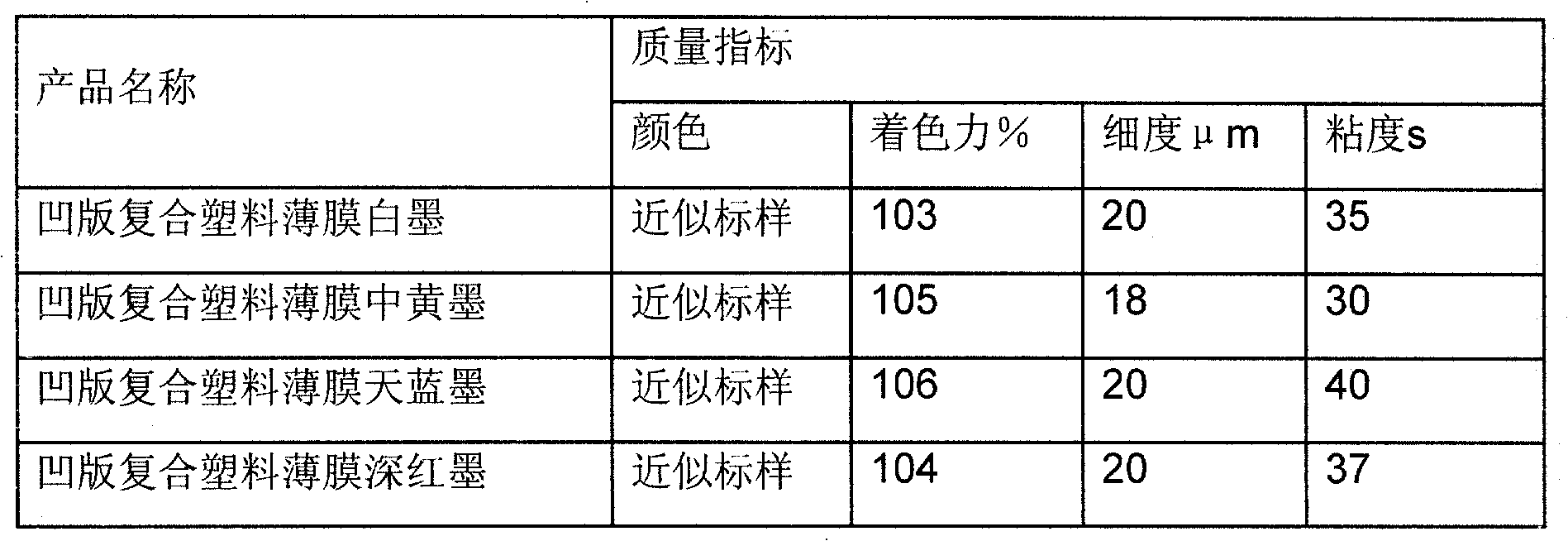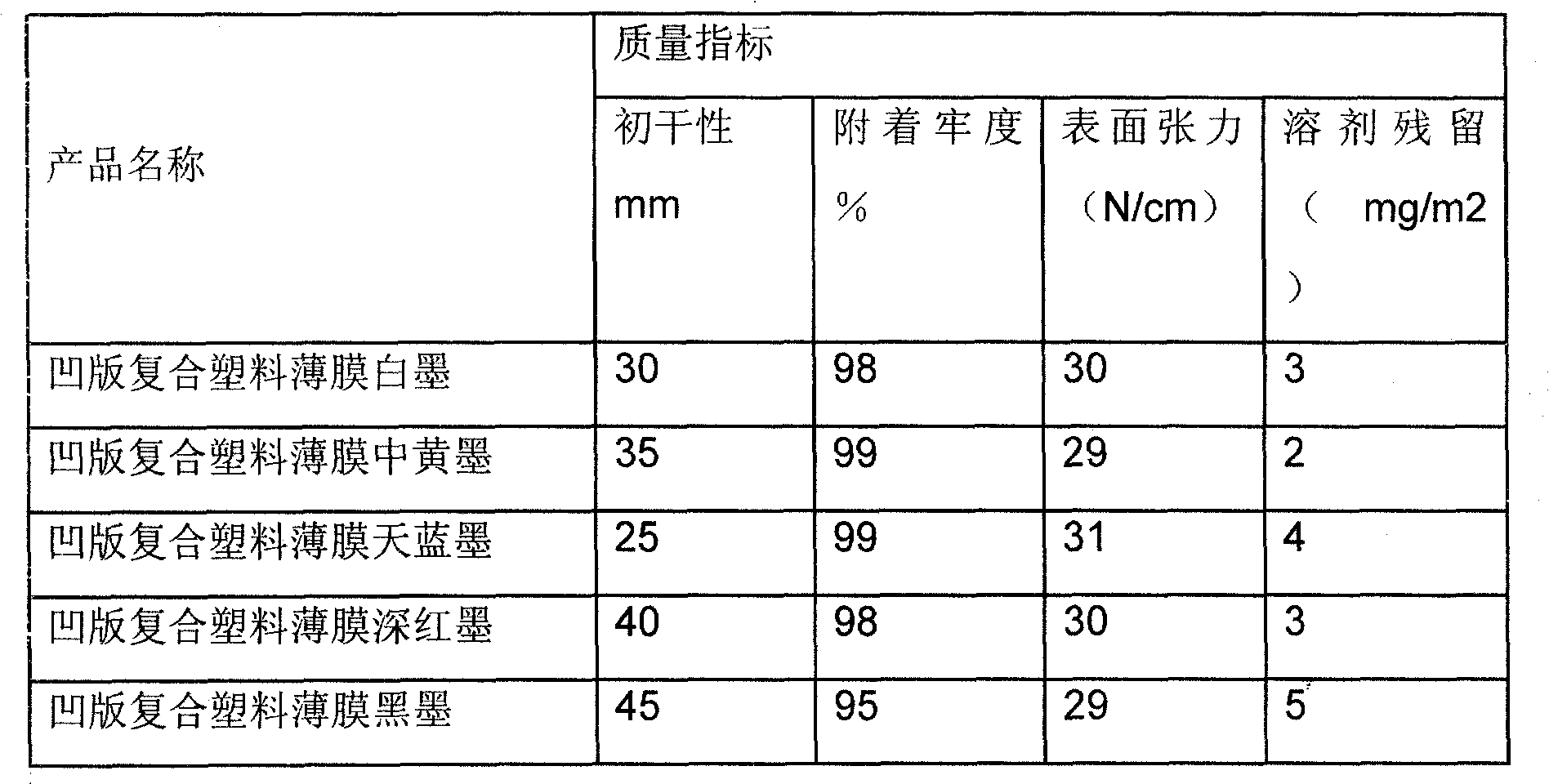Environment-friendly type joining material resin for printing ink
A technology for printing inks and binders, applied in the field of binder resins, can solve problems such as poor adhesion, achieve good wetting and dispersibility, strengthen interaction force, and good acid resistance.
- Summary
- Abstract
- Description
- Claims
- Application Information
AI Technical Summary
Problems solved by technology
Method used
Image
Examples
example 1
[0026] Preparation:
[0027] (1) Mix 5 parts by mass of hydroxyl-terminated polybutadiene and 3 parts by mass of isophorone diisocyanate evenly, heat up to 90-110°C, and react for 4 hours to make isocyanate-terminated prepolymer. The mass of isophorone-terminated isocyanate The content is 3.5%;
[0028] (2) The polyadipate sebacic acid-1,4-butanediol neopentyl glycol ester diol, the ethyl acetate of 20 mass parts, the acetic acid of 20 mass parts with terminal isocyanate prepolymer and 10 mass parts Mix isobutyl ester and 10 parts by mass of n-propyl acetate, heat up to 85°C, react for 3 hours, then add 3 parts by mass of γ-aminopropyltriethoxysilane, and keep the reaction temperature at 85°C for 1 hour, Add 10 mass parts of isopropanol and 10 mass parts of absolute ethanol;
[0029] (3) Add 5 parts by mass of aldehyde and ketone resin, 2 parts by mass of terpolymer vinyl chloride resin and 2 parts by mass of nitrocellulose, stir and mix evenly at high speed, viscosit...
example 2
10
[0033] Preparation:
[0034] (1) Mix 5 parts by mass of hydroxyl-terminated polyolefin and 3.5 parts by mass of methylcyclohexyl diisocyanate evenly, heat up to 90-110°C, and react for 4 hours to make a terminal isocyanate prepolymer. The mass content of terminal isocyanate is 3.2%;
[0035] (2) Polyadipate-1,4-butanediol-1,2-propylene glycol ester diol, 30 mass parts ethyl acetate, 15 mass parts isoacetic acid isocyanate prepolymer and 9.5 mass parts Butyl ester and 5 parts by mass of n-propyl acetate were mixed, the temperature was raised to 85°C, and reacted for 3 hours, then 2.5 parts by mass of γ-aminopropyltrimethoxysilane was added, and the reaction temperature was maintained at 85°C for 1 hour, and 10 The isopropanol of mass parts and the dehydrated alcohol of 10 mass parts;
[0036] (3) Add 5.5 parts by mass of aldehyde and ketone resin, 1.5 parts by mass of ternary polyvinyl chloride resin and 2.5 parts by mass of nitrocellulose, stir and mix evenly...
PUM
| Property | Measurement | Unit |
|---|---|---|
| peel strength | aaaaa | aaaaa |
| viscosity | aaaaa | aaaaa |
Abstract
Description
Claims
Application Information
 Login to View More
Login to View More - R&D
- Intellectual Property
- Life Sciences
- Materials
- Tech Scout
- Unparalleled Data Quality
- Higher Quality Content
- 60% Fewer Hallucinations
Browse by: Latest US Patents, China's latest patents, Technical Efficacy Thesaurus, Application Domain, Technology Topic, Popular Technical Reports.
© 2025 PatSnap. All rights reserved.Legal|Privacy policy|Modern Slavery Act Transparency Statement|Sitemap|About US| Contact US: help@patsnap.com


